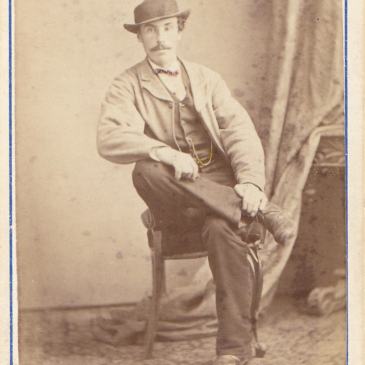Red and violet: the impact of Brewster stereoscopy
A modern viewer would assume that these portraits all have their provenance in a family album, and that a small childish hand had been at work with a paintbox. Perhaps that was the case, but there may yet be another explanation for why the portraits below, all bearing Thomas Nevin’s studio stamp, should exhibit such crude hand colouring when the hand-tinting of his other portraits – of family members, of himself, and even of a few mugshots of convicts – is remarkably fine and delicate. The four examples here were all sold commercially, and were painted over after their purchase by their owners who had enough knowledge of stereoscopy to experiment, and may have possessed a stereo viewer. Single cdv’s were also viewed using a stereoscope, and the addition of colour and lines enhanced the depth of field. They were not painted by Thomas J. Nevin during printing, and they are not stereographs. None of Nevin’s stereographs were coloured in this manner. … More Red and violet: the impact of Brewster stereoscopy







You must be logged in to post a comment.